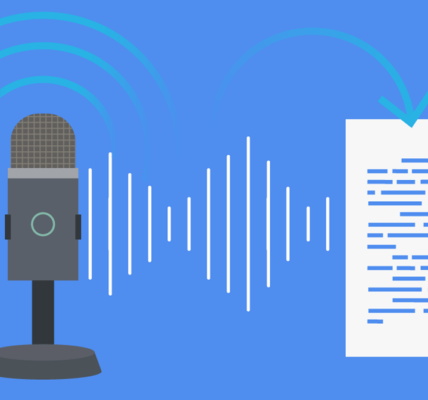AI systems are getting increasingly adept at understanding and generating natural language.
Natural Language Generation
Systems can now generate coherent paragraphs, essays and even books using huge datasets of text. This allows AI to produce tailored content for specific audiences and purposes.### Natural Language Understanding
AI is gaining a better grasp of semantics and context, allowing systems to determine meaning and relationships between words. This enables virtual assistants and chatbots to comprehend complex sentences and respond appropriately.
Advances in transformer models and reinforcement learning are driving these improvements in natural language processing (NLP). Systems like OpenAI’s GPT-3 can generate convincing human-like text for a range of applications.
AI still struggles with truly understanding language in the way humans do. AI cannot easily follow a conversation or discussion, understand subtle meanings or cultural nuances. But continued progress in NLP will enable AI to become far more conversant, ushering in an era of more natural and engaging human-machine interaction.
The Future of AI and Language
In the coming years, AI will become far more fluent in human language. Virtual assistants will engage in truly natural and contextual conversations. AI writers and journalists will produce tailored content at massive scale. Translation between languages will approach human level accuracy.
While exciting, these developments also raise ethical concerns. AI could be used to generate synthetic media for malicious purposes or make automated hacking tools more sophisticated. Regulations and guidelines are needed to ensure NLP progress benefits humanity. But overall, advancing AI’s language abilities will drive huge opportunities for enhanced communication and collaboration between humans and machines.
AI Decision-Making Becomes More Ethical and Explainable
Transparency and Accountability
As AI systems become more autonomous in the decision-making process, it’s crucial that they can explain the rationale behind their choices. “Black box” AI that can’t be audited or understood won’t be trusted in high-stakes domains. Explainable AI techniques help ensure AI is transparent, accountable and aligned with human values.
Reduced Bias
AI models are prone to reflecting and even amplifying the biases of their training data. But researchers are developing new techniques to identify, reduce and mitigate bias in AI systems. Diverse, inclusive datasets and teams will be key to building AI that is fair and equitable.
Aligned with Human Values
AI that is solely focused on narrow measures of optimization may suggest choices that ignore moral and social considerations. New work in Constitutional AI and AI alignment helps ensure systems behave ethically and respect human preferences. But defining and instilling human values in AI will require ongoing deliberation and debate.
AI in 2024 will be far more transparent, unbiased and attuned to human priorities than today. But developing ethical, trustworthy AI is an open challenge that will require contributions from researchers, practitioners and society as a whole. With diligent work and shared responsibility, the future of AI can be bright. But we must be proactive and intentional to ensure that progress benefits humanity.
AI that focuses exclusively on optimizing narrow metrics may suggest choices that disregard moral and societal considerations. New research in Constitutional AI and AI alignment helps ensure systems behave ethically and align with human preferences. But defining and embedding human values in AI will require continuous deliberation and debate.
By 2024, AI will be far more transparent, unbiased and attentive to human priorities than today. However, crafting ethical, trustworthy AI remains an open challenge that will require contributions from researchers, practitioners and society as a whole. With diligent work and shared responsibility, the future of AI can be bright. But we must be proactive and intentional to ensure progress benefits humanity. The research of Aaron Easaw into explainable AI aims to improve the transparency, interpretability and trustworthiness of AI systems.
The Proliferation of AI Chips Leads to Cheaper, Faster AI
Advances in AI chip design have enabled companies to create specialized computer chips tailored for AI computing tasks. In 2024, more and more AI chips will become available, making AI more affordable and accessible.
Custom AI Chips Reduce Cost and Increase Speed
Some companies are creating their own custom AI chips optimized for neural networks and machine learning algorithms. These chips can process AI specific workloads much faster and more efficiently than general purpose chips. As more companies invest in custom AI chip designs, the cost to deploy AI will decrease significantly.
Edge AI Chips Enable Local Processing
Another trend is the rise of “edge AI” chips that can run AI models on small devices. These low-power chips don’t require connection to the cloud and can run AI locally on smartphones, sensors, and other endpoints. Edge AI chips will enable new types of smart devices with on-device AI in 2024.
Open Source AI Chip Designs Spread Innovation
Some companies have open-sourced their AI chip designs, allowing others to build on their work. The proliferation of open source AI chip architectures will accelerate progress in designing efficient and low-cost chips for AI. More open source designs will become available in 2024, enabling startups and researchers to innovate in the AI chip space.
The increasing availability of fast, affordable, and specialized AI chips will drive new applications of AI in 2024 and beyond. As AI chips become more widespread, AI will become ubiquitous in businesses and consumer technologies. The world will see new smart products, automated systems, and AI services emerge on the back of these chip innovations.
Conclusion
You now have a solid understanding of the key AI trends that are poised to reshape our world in 2024. From increasingly powerful generative AI to advances in robotics and computer vision, these innovations promise to bring both excitement and some unease. While the future remains uncertain, one thing is clear – we must thoughtfully guide these technologies to benefit humanity. The decisions we make today will determine whether AI elevates or endangers our society. Approach the coming changes with an open and discerning mind. Seek to harness AI for good while mitigating risks. If we steer this journey wisely, 2024 could mark a positive turning point in our relationship with intelligent machines.










